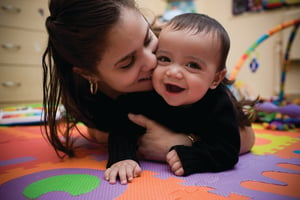Need time to do some work? Creative types of activities can last hours and are repeated often by...
Using Praise for Effective Parenting
Saying “good job,” to your child is praise, but cloudy in providing information. If we want the child to know precisely what they did that was good, so they will be more likely to repeat the behavior, use labeled praise. “Good job picking up the Legos when you finished playing,” gives the child more information.
Using praise helps shape the behaviors we would like to see, while extinguishing behaviors we don’t want. “I like the way you are taking turns with your sister.” With this social reward your child gets a dose of dopamine. Your child feels good. If it makes the child feel good, they are more likely to repeat.
We are quick to run in when siblings fight and more likely to sit and enjoy the peace when they are getting along. Shaping behavior means taking the time to call out, “I like the way you two are playing the game and getting along.” Again, praise the behavior you want to see more of.
Experts also advise praising the effort. “Wow, you worked so hard on that drawing. Look at those red lines.” Rather than saying, “That is so pretty.” Children who are praised for effort will continue to try for themselves. Children praised for your evaluation of pretty, will draw to please your idea of pretty.
Some of us may have trouble remembering to praise, especially if we weren’t raised with praise. One trick is to put 5 pennies in your left pocket. Every time you praise, move a penny to the right pocket. At the end of an hour, all the pennies will be in the right pocket. Repeat. Eventually praising will become second nature and our child will be on their way to feeling more positive about themselves.
Praise doesn’t always have to be verbal and labelled. Sometimes give a fist bump, a high five, or a victory dance. Have fun and enjoy being with your child as they learn.




